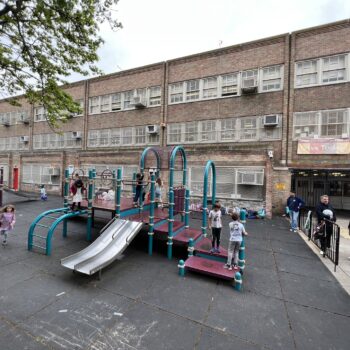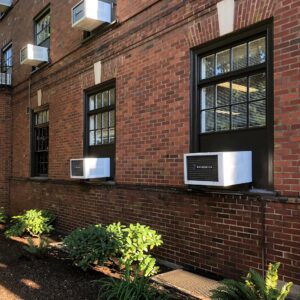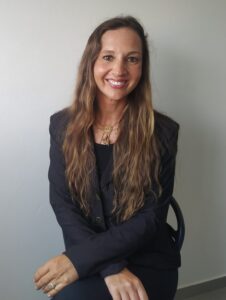Are they providing a safer environment to students against deadly viruses?
Dr Flavia Dinnebier, Research Director, Eneref Institute, believes that to be the case
According to the United Nations, one new infectious disease emerges every four months across the globe. In that context, building filtration may play a crucial role in mitigating future respiratory infections caused by viruses. Respiratory infections – including the common cold and flu, as well as asthma – are caused by airborne pathogens.
 Eneref Institute examined how New York City public schools’; early adoption of MERV-13 filtration in window air conditioning units may have reduced COVID infections. Eneref Institute is a Washington DC-based research and advocacy organisation for socially responsible sustainable development. The NYC public school district is the largest in the United States, with over one million students. To protect students from respiratory virus infection, MERV-13 air filtration is highly recommended by organisations responsible for school safety. Equally important, MERV-13 filters improve IAQ, minimising adverse health effects for students by reducing pollutants.
Eneref Institute examined how New York City public schools’; early adoption of MERV-13 filtration in window air conditioning units may have reduced COVID infections. Eneref Institute is a Washington DC-based research and advocacy organisation for socially responsible sustainable development. The NYC public school district is the largest in the United States, with over one million students. To protect students from respiratory virus infection, MERV-13 air filtration is highly recommended by organisations responsible for school safety. Equally important, MERV-13 filters improve IAQ, minimising adverse health effects for students by reducing pollutants.
The New York City school buildings’ filtration upgrade has not been well-publicised and is the Education Department’s best-kept secret in their fight against COVID-19. “I know about the filters, because I’m friends with the custodian, but I don’t know if everyone else knows,” said Leisha Borden, Secretary to the Principal of Boys and Girls High School. “It would make them feel like I feel—a little bit safer.”
The air conditioning units in the schools act as a filtration system to capture virus particles throughout the year by continually re-filtering and circulating conditioned air regardless of temperature demand.
Lavonne Gaston, Parent Coordinator at Boys and Girls High School, noted, “We talk about the cleaning and all those things with parents, but I think sometimes we don’t go into the air conditioning and those types of details with them.”
Eneref found that during cooler, winter months, the units were used in fan-only mode, where the energy demand is negligible. Howard Blady, Owner, Klearview Appliance, said: “You can put it on fan mode to [capture the virus], and it’ll cost you a fraction of the money in energy. You’re only spinning the fan motor, and you have MERV-13 filtration.” The New York City Department of Education (NYCDOE) purchased the MERV-13 filters from Klearview Appliance.
All of the window air conditioning units installed with MERV-13 filters were manufactured by Friedrich Air Conditioning Co., a 140-year-old American company. Early in the COVID-19 pandemic, Friedrich recognised that their standard window and through-the-wall air conditioner lines were already built with the necessary headroom to expand their filtration from a MERV-6 to a virus-removing MERV-13.
The United States EPA Science Advisory Board consistently ranks indoor air pollution among the top five environmental risks to public health, as indoor contaminants can be as much as 100 times higher than outdoor levels. Beyond increasing exposure to respiratory viruses, poor indoor air in schools has been shown to aggravate asthma, allergies and other respiratory illnesses in students.
The HVAC equipment in schools almost certainly played a role in the transmission of the COVID virus; according to ASHRAE’s “Filtration & Disinfection Guidance” document, issued on May 7, 2021, “airborne transmission of SARS-CoV-2 is significant and should be controlled”. Outdoors, viral particles are dispersed by winds. Indoors, proper filtration is needed to reduce concentration and, thus, the overall viral dose to which occupants are exposed.
The MERV-13 filtration in the NYC school buildings help protect the students from contracting the SARS-CoV-2 virus. While the individual virion molecules are only 0.1 micrometer in size, the virions are embedded within, and spread through, respiratory droplets that are an order of magnitude larger – 1-3 micrometers in size. MERV-13 filtration is 85% effective at capturing particles in the range of 1-3 micrometers – more than five times the efficacy of the more common MERV-8 filters.
In August 2021, John T Shea, CEO, Division of NYC School Facilities (DSF), directed custodian engineers to install MERV-13 as replacements for existing air conditioner filters. Custodial staff, who regularly maintain the school district’s entire HVAC system, replaced the filters at 30-day intervals. To assure against any leakage, the filters were installed using filter clips provided by Shea’s department. Four months later, in December 2021, the New York State Education Department sent out its own directive from the Office of Facilities Planning, recommending “high efficiency MERV-13 air filters as a proven and safe method for removing pathogens and other contaminants with the HVAC system”. Funds for the filters were authorised by American Rescue Plan (ARP) education funds.
Based on research for this report, Eneref Institute found that almost all window air conditioners sold in the United States are now manufactured in Asia. In order to fit a greater number of air conditioners onto shipping containers, Asian-manufactured units are built necessarily small, leaving little room for a more robust filter.
Blady explained: “You’ve got to get the packing boxes to a certain size, because you don’t want to fit two-and-a-half boxes across your shipping container. You want to fit that third box. That’s not a concern for Friedrich. They just pack them on trailer-trucks. That’s why their product makes sense.”
A further obstacle for Asia-based manufacturers is that the cost of shipping has increased significantly during the pandemic. Although the Friedrich filters are proprietary and need to be replaced regularly, today they are still the only major window air conditioning units that house a MERV-13 filter.

Dr Flavia Dinnebier
Outside air dilutes indoor airborne contaminants, which is why opening windows is recommended. However, the United States Center for Disease Control suggests that while ventilation can reduce the risk of viral exposure, it will not eliminate risk. The air conditioners installed in New York City Schools are designed to allow some outside air to ventilate the classroom. At the same time, their MERV-13 filters limit the need for an overabundance of outdoor air, thereby lowering the costs of heating and cooling from temperature differentials.
Grecian Harrison, Principal, Brooklyn’s Boys and Girls Highschool, explained that schools should be a place where students achieve success and embrace learning in a safe and supported environment. Healthy indoor air is part of that school’s safety programme and should become standard, not just at Boys and Girls, but in commercial, industrial and institutional buildings across the United States.
The author of this article has a PhD in Environmental Education and is Master of Environmental Law. She may be reached at flavia.dinnebier@eneref.org.
Copyright © 2006-2025 - CPI Industry. All rights reserved.